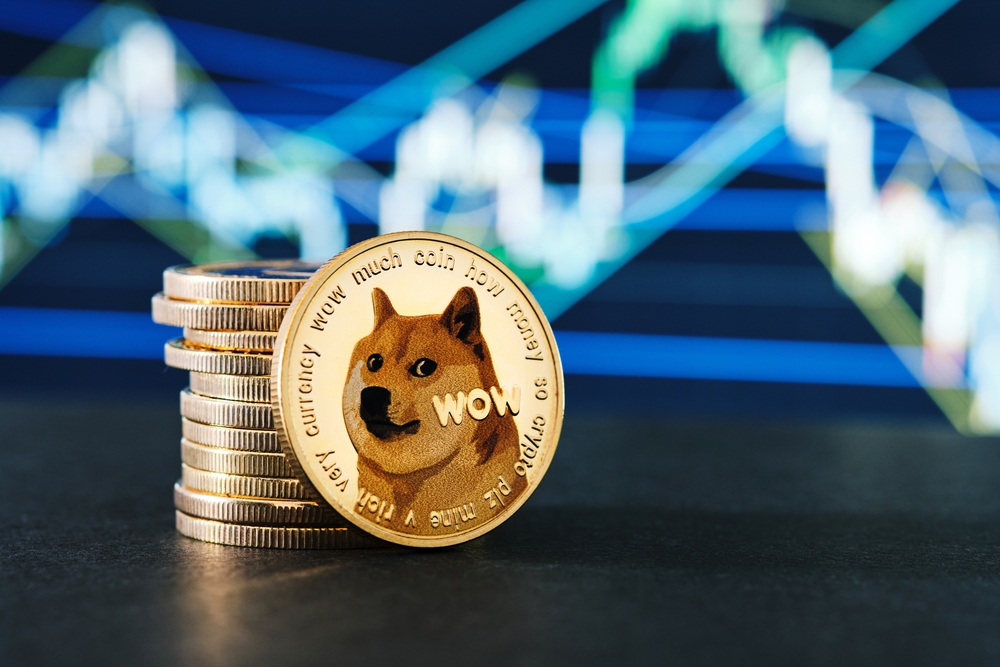Dogecoin (DOGE) has catapulted from a light-hearted parody into a widely recognized cryptocurrency, partly thanks to endorsements from high-profile individuals like Elon Musk.
This guide dives deep into the art of mining Dogecoin today, laying out the essentials and the more intricate aspects of this captivating digital enterprise.
A Primer on Dogecoin
Initially conceived as a playful riff on internet culture in 2013 by creators Billy Markus and Jackson Palmer, Dogecoin has evolved beyond its meme origins to establish a dedicated following.
Functioning on a similar technological framework as Litecoin, Dogecoin uses the Scrypt algorithm. This choice facilitates quicker mining times and reduces the energy footprint in comparison to Bitcoin’s SHA-256 algorithm.
The Ins and Outs of Dogecoin Mining
Mining stands as a pillar in the digital currency world, playing a dual role in transaction verification and network security. For Dogecoin, mining signifies the process of creating new coins as a reward for computational efforts to solve complex mathematical puzzles.
Miners employ robust computing solutions—CPUs, GPUs, or the more specialized ASICs—to tackle these puzzles and authenticate transactions.
Dogecoin’s network is fortified by a Proof-of-Work (PoW) mechanism, mandating that miners complete cryptographic challenges to unearth new DOGE. This mechanism is integral to preserving the security and integrity of the Dogecoin blockchain.
Mining Dogecoin vs. Bitcoin
Dogecoin and Bitcoin mining share the foundational Proof-of-Work protocol, yet they diverge significantly in execution. The crux of the difference lies in the mining algorithms each employs: Bitcoin adopts the SHA-256, while Dogecoin uses the more accessible Scrypt algorithm.
Reward structures further separate the two: Bitcoin dispenses 6.25 BTC for every mined block, contrasting with Dogecoin’s more abundant reward of 10,000 DOGE per block. Dogecoin also boasts a swift block time of just one minute, a stark difference from Bitcoin’s 10-minute interval.
Approaches to Mining Dogecoin
Dogecoin mining can be tackled in three primary ways: solo mining, pool mining, and cloud mining.
Solo Mining Dogecoin
Solo mining Dogecoin is an independent venture, requiring a significant investment in hardware and electricity. Although this method means miners keep the full reward, the high costs and difficulty of mining alone make it less feasible for the average enthusiast.
Pool Mining Dogecoin
Pool mining is a collaborative effort where miners join forces, merging their computational resources to increase the odds of mining a block. Rewards are then split in proportion to each participant’s contributed power, after deducting any applicable pool fees.
Cloud Mining Dogecoin
Cloud mining offers a hands-off approach by leasing mining power from a third-party data center. This option eliminates the need for personal hardware investment but comes with its own risks, such as less control and the potential for financial loss if Dogecoin’s value falls against the cost of mining contracts.
Essentials for Mining Dogecoin
Embarking on the Dogecoin mining adventure requires assembling a toolkit of hardware, software, and a digital wallet for storing your mined coins.
Selecting Hardware for Mining Dogecoin
To mine Dogecoin effectively, you’ll need the right hardware. The most common types include:
– GPUs: These are favored for their balance between cost and mining capabilities, offering a sweet spot for many miners.
– ASICs: These devices are top-tier in mining efficiency, particularly models designed for the Scrypt algorithm, which Dogecoin employs.
Choosing Mining Software
The hardware must be complemented with reliable mining software. The options vary depending on your hardware of choice:
– For GPU miners, programs such as EasyMiner provide a user-friendly interface and are adaptable to different mining devices.
– ASIC miners typically benefit from bespoke software that maximizes the potential of their hardware, with some miners preferring the versatility of EasyMiner.
Both hardware and software choices should align with your technical proficiency, budget, and mining strategy. Remember that efficiency and longevity in mining Dogecoin are heavily dependent on these initial choices.
Dogecoin Wallet & Mining Steps
To collect Dogecoin mining rewards, a Dogecoin wallet is required. You can choose from online, software, or hardware wallets, each with different security and convenience levels.
Quick Mining Guide
1. Select a mining approach: solo, pool, or cloud.
2. Set up and configure your mining equipment and software.
3. For pool mining, join a reputable Dogecoin pool.
4. Launch the mining software to start mining and track your progress and earnings.
Conclusion
Mining Dogecoin has transitioned from a playful endeavor to a serious investment for many. With the right setup and knowledge, mining DOGE could be a rewarding venture.
